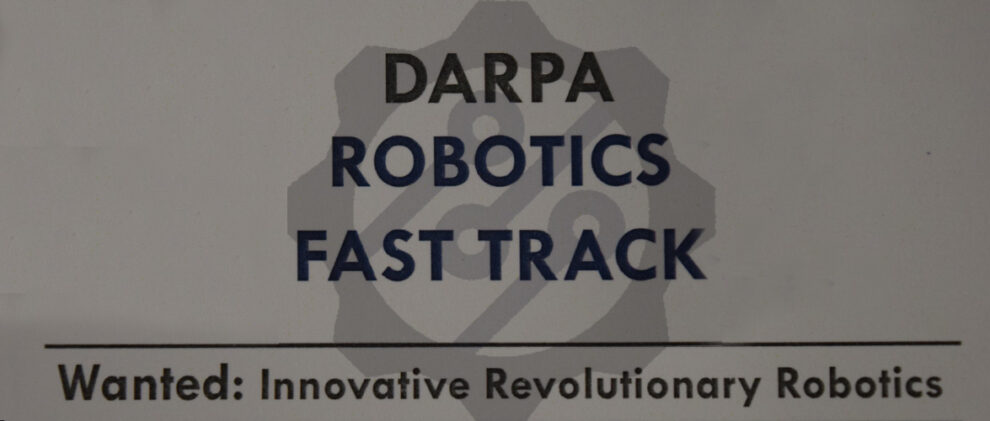The DARPA Robotics Fast Track Program is currently awarding 6-12 month long commercial contracts with a soft cap of $150,000. The Defense Advanced Research Projects Agency (DARPA) is running a pilot program to boost hardware research with robotics applications. The Robotics Fast Track Program comes on the heels of a previous DARPA initiative that focused exclusively on software and cyber security, drawing participants from all over the world!
I was fortunate to attend an orientation meeting at the Redwood City, CA TechShop headed up by the DARPA program manger Mark Micire and here is what he had to say about the Robotics Fast Track (RFT) Program:
- DARPA is looking for technology that can bring “order of magnitude” change rather than “incremental” improvement. The example that Mark used was if the invention you want financed brings a x2 cost reduction to a process, then this program is not for you. If the invention brings a x10 cost reduction [1 order of magnitude], then you may have his interest. If it is a x100 cost reduction [a fundamental change], then Mark wants to know more about it.
- The technology has to be connected to robotics, and “you have to be able to say that with a straight face.” This means software, interpreting sensor signals in a new way, brand new sensors, motors or devices.
- All proposals will receive feedback within a few weeks. Mark emphasized heavily that this is a major departure from other government programs that will not communicate why funding has been rejected.
- While DARPA is a government institution, the Fast Track goes through a commercial intermediary, therefore, the applicant is shielded from the government bureaucracy and citizenship requirements.
- DARPA keeps IP rights of the invention that the taxpayers are financing, but the inventors are allowed to change, alter or freely pursue commercialization. In an extreme example, someone from the support group mentioned that the project can even be open sourced. To further sweeten the deal, any knowledge gained while being financed by DARPA also remains property of the inventor.
- Communication with DARPA will go through intermediary called “Bits”. The “Bits” are people who initially review the projects and try to find a place for them within the US Military. This includes rehabilitation devices for the Department of Veterans Affairs, logistic support for any of the countless military warehouses all the way up to combat gear. Once these connections are established the Fast Track Program will provide the necessary connections and presentation time to showcase the inventions to other parts of the military for further testing and evaluation.
- On the subject of making connections, it was also established that in addition to the financial support of up to $150,000 the program can also provide military equipment that would otherwise be unavailable or too expensive if it is a required part to test your invention (for example, new software, sensors or drive train that augment already existing military equipment).
- It is highly recommended that the proposal includes a timeline of the expected progress, decision gates and contingency plans in case things do not turn out as desired.
- Finally, Mark gave a pretty big tip: use the Fast Track Program contact e-mail address (rft@osrfoundation.org) to run ideas past the team before writing a full proposal.
If you are interested, visit the RFT website: https://rft.osrfoundation.org/index.html.
For additional resources, RFT recommends you also visit:
BIT Systems: https://www.linkedin.com/company/bit-systems
Open Source Robotics Foundation: http://www.osrfoundation.org









Add Comment